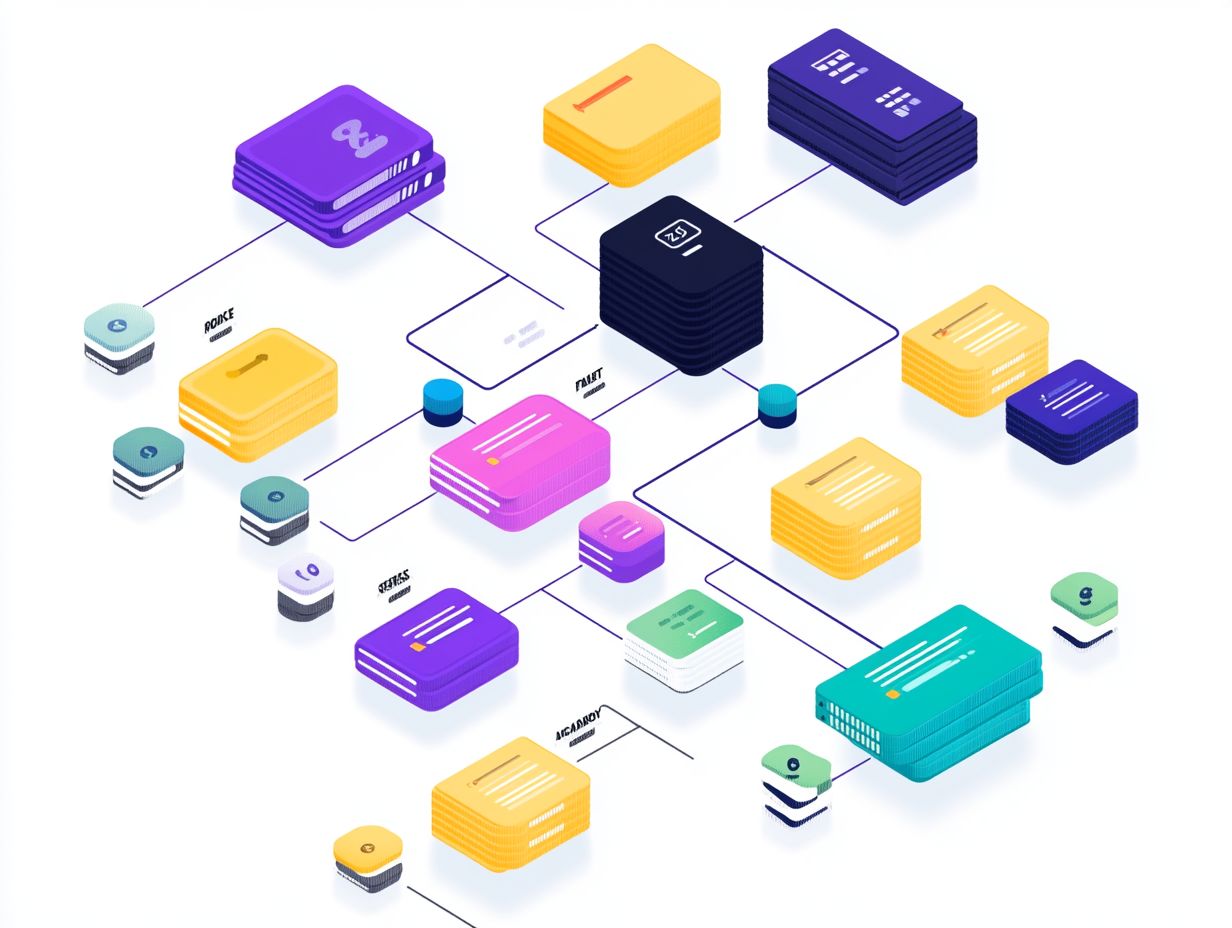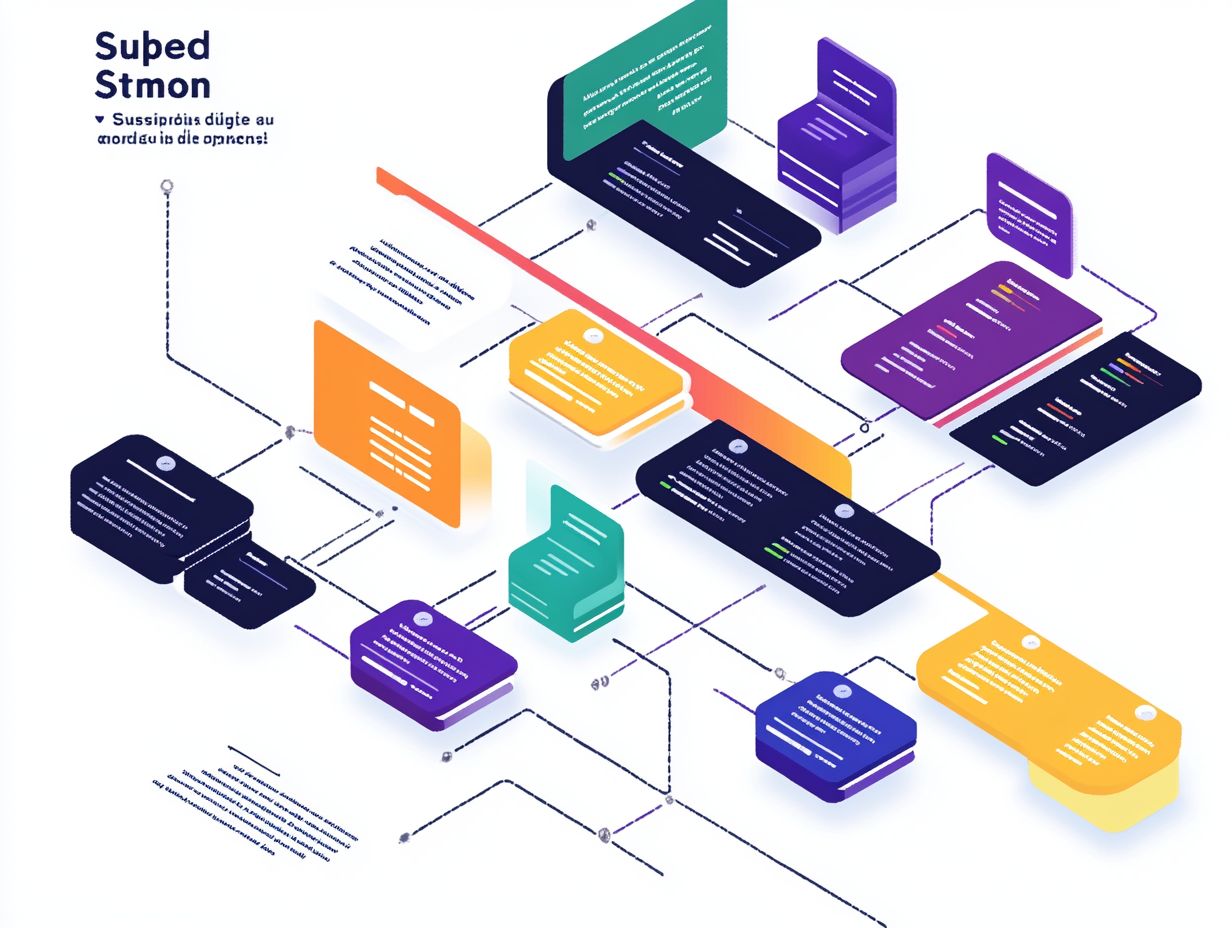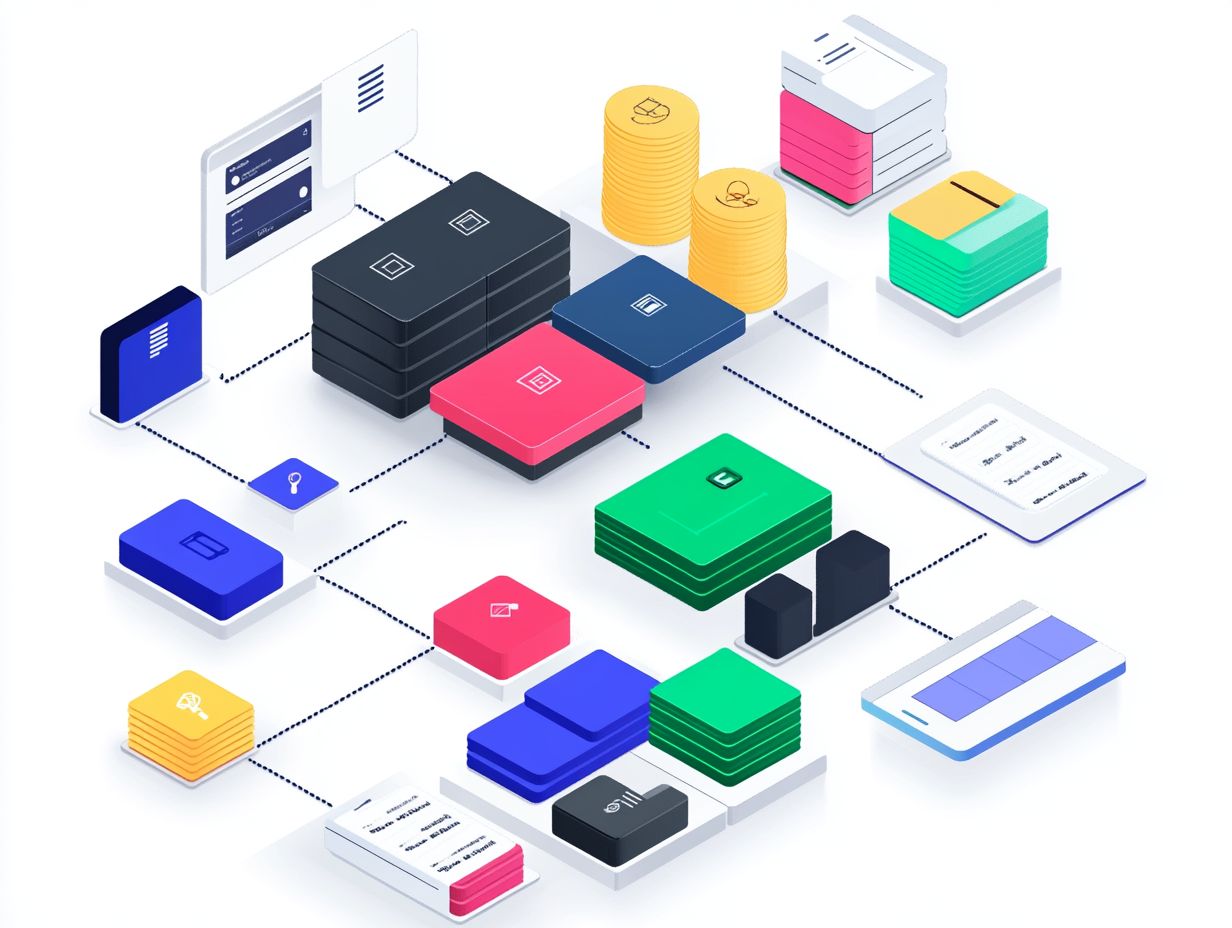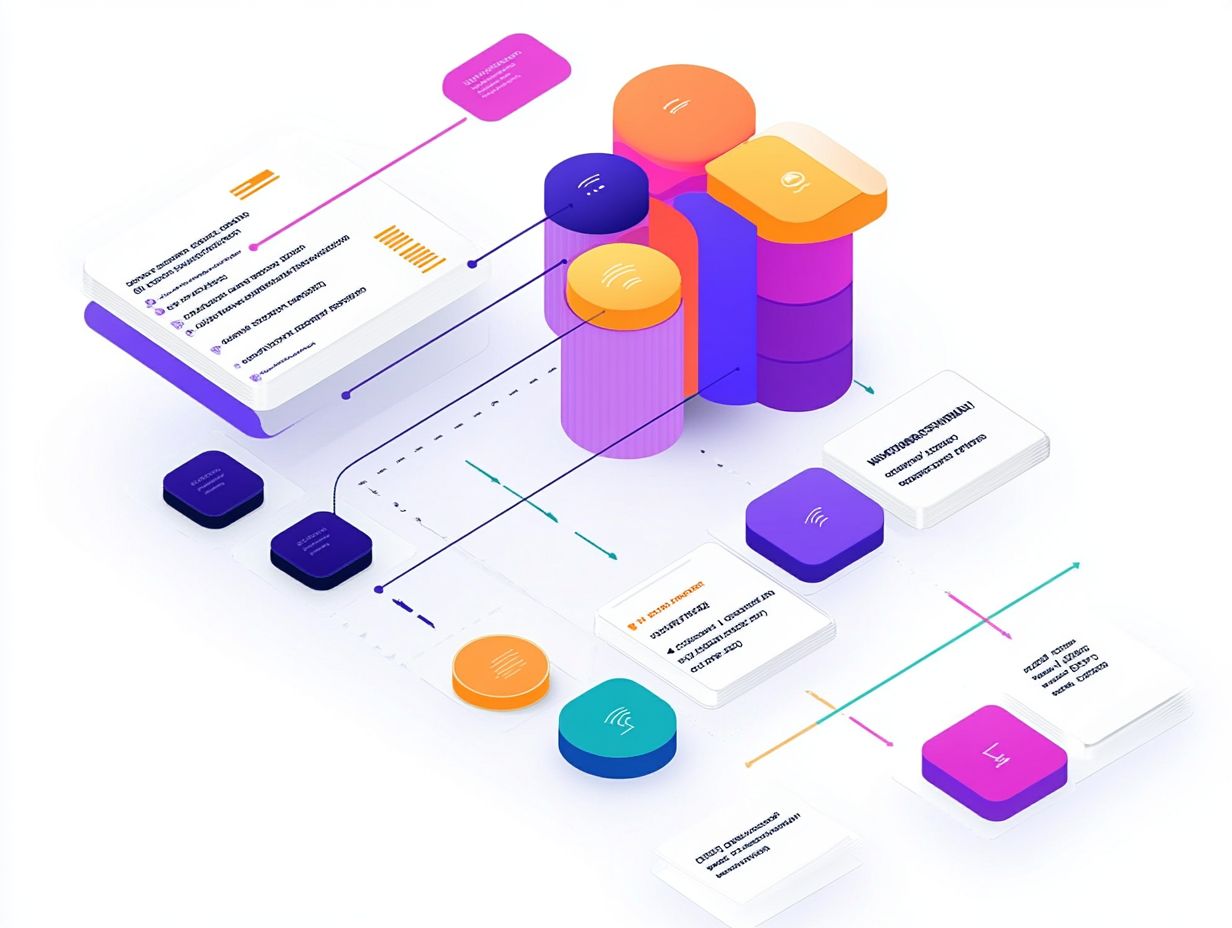Understanding Pricing Models in Subscription Services
Subscription services have revolutionized the way you engage with businesses, delivering unparalleled convenience and personalized experiences.
This article delves into the diverse array of subscription services available, highlighting their myriad benefits from significant cost savings to bolstering customer loyalty.
You’ll uncover common pricing models, including flat rate, usage-based, and tiered pricing. Consider the essential factors that will guide you in selecting the most suitable model for your business.
Explore best practices for implementing subscription pricing that prioritizes transparency and actively encourages valuable customer feedback.
Discover how to unlock the full potential of your subscription offerings!
Contents
Key Takeaways:

- Subscription services offer convenience and cost savings for both businesses and consumers.
- Understanding the different pricing models, such as flat rate, usage-based, and tiered pricing, can help businesses make informed decisions.
- When choosing a pricing model, consider your target audience, business goals, and product or service offering.
Benefits of Subscription Services for Businesses and Consumers
Subscription services present a wealth of advantages for both businesses and consumers. They elevate traditional transactional relationships into ongoing engagements that cultivate loyalty and drive growth.
For businesses, these models enhance customer retention by providing predictable, recurring revenue streams, significantly bolstering long-term revenue growth. Meanwhile, consumers relish the convenience of flexible access to tailored products and services, often at a lower upfront cost.
Definition and Types of Subscription Services
Subscription services have fundamentally transformed how you interact with your customers, offering flexible pricing options that cater to the diverse needs of various industries.
With models like flat-rate pricing, where a single fee grants unlimited access, tiered pricing that lets you select different service levels, per-user pricing charging based on the number of users, and usage-based pricing that aligns costs with actual usage, subscription pricing has become a pivotal driver in maximizing customer value and enhancing retention.
Each subscription model presents unique advantages and disadvantages tailored to your preferences and business expenses. For example, flat-rate pricing simplifies budgeting and attracts high-usage users, but it may leave occasional users feeling underwhelmed.
Tiered pricing offers flexibility but can confuse customers if the tiers differ too dramatically in features. Per-user pricing is advantageous for businesses with changing team sizes, as it scales costs with usage, but it can become pricey as your organization expands.
Usage-based pricing cultivates a pay-as-you-go mindset, ideal for sporadic users, though it could lead to unpredictable expenses. By understanding these models, you ll be well-equipped to choose the best approach that aligns with your customer engagement strategies.
Convenience and Cost Savings
The convenience and cost savings that subscription services offer are key reasons behind their rising popularity. With various pricing models available, you can access products and services on-demand without the stress of hefty upfront payments.
This appealing structure not only attracts a diverse array of customer segments but also nurtures long-term loyalty. For businesses, it streamlines expenses linked to inventory management, while you benefit from the ease of predictable budgeting.
The chance to experiment with new products at a fraction of the cost encourages you to explore options you might have otherwise missed.
The flexibility of subscription plans be it monthly, quarterly, or annually caters to your unique lifestyle and financial situation, reinforcing the value proposition and enhancing both customer acquisition and retention.
If you re eager to learn more about maximizing subscription services and pricing models, feel free to reach out for further information!
Common Pricing Models in Subscription Services
In the world of subscription services, you will find a variety of pricing models designed to meet diverse business strategies and customer needs. Each model presents distinct advantages for specific market segments.
Grasping the subtleties of these common pricing models such as flat-rate pricing, which provides unlimited access for a single fee; tiered pricing, allowing customers to select from various service levels; per-user pricing, which charges based on the number of users; and usage-based pricing, aligning costs with actual consumption can profoundly impact your pricing strategy and overall success. For example, understanding the trends in car subscription services can further enhance your approach.
Flat Rate Pricing

Flat-rate pricing is your go-to subscription model where you pay a fixed amount for unlimited access to a service or product. This simplicity and predictability make it incredibly appealing to many.
You enjoy clear, upfront costs without the nagging worry of additional charges, significantly boosting your satisfaction and loyalty.
This approach makes your experience clearer by removing the confusion that often comes with tiered or variable pricing models. You will know exactly what you are getting for your money, fostering trust and enhancing your commitment.
As a result, businesses that embrace flat-rate pricing often see a surge in customer acquisition. This model promotes transparency, making it easy for you to commit without the fear of hidden fees.
Compared to more complex pricing strategies, flat-rate options stand out as a more attractive choice for both you and the service provider, paving the way for sustained revenue growth.
Usage-Based Pricing
Ever wondered how you can save by only paying for what you use? Usage-based pricing, also referred to as pay-as-you-go pricing, charges you based on your actual use of a service. This approach can be particularly advantageous for businesses like yours, as it aligns pricing with customer behavior.
It offers the flexibility you might need, especially if your usage isn t consistent. This makes it appealing to a range of customer segments seeking cost-effective solutions.
In sectors such as cloud computing, streaming services, and telecommunications, this pricing model allows you to pay only for what you consume, potentially leading to substantial savings.
For your business, adopting usage-based pricing can elevate how customers perceive value. This enhances loyalty and satisfaction by ensuring they only invest in what truly meets their needs.
This strategy can also provide you with a competitive edge in the marketplace. By promoting transparency and fairness, it encourages more customers to engage with your services, all without the worry of hefty upfront fees or hidden costs.
Tiered Pricing
Tiered pricing is an innovative subscription model that provides you with the flexibility to select from multiple service levels. This ensures you find a plan that perfectly aligns with your specific needs and budget.
This approach enhances your value as a customer by accommodating diverse preferences and usage patterns, ultimately fostering greater customer retention.
A well-crafted tiered pricing strategy attracts a broad audience and invites you to explore higher tiers as your needs evolve. Companies like Basecamp exemplify this model by offering various levels of functionality that cater to freelancers, small businesses, and large teams alike.
By effectively addressing the unique pricing challenges of balancing affordability with how much customers think the service is worth, these companies optimize their offerings to maximize your satisfaction and drive revenue growth.
Factors to Consider when Choosing a Pricing Model
Choosing the right pricing model now can significantly impact your business growth tomorrow! When selecting a pricing model for your subscription services, it’s essential to consider a range of factors that will align with your overall pricing strategy and long-term business objectives.
- A deep understanding of your target audience s needs and preferences
- Evaluating potential customer segments
- Assessing how pricing flexibility can enhance both customer acquisition and retention
Evaluate your current pricing models and consider implementing new strategies for better results!
Target Audience and Business Goals
Identify your target audience and align your subscription pricing with business goals. This is essential for maximizing customer acquisition and retention.
Understand customer preferences to tailor your pricing strategies. This ensures your offerings resonate with your intended audience.
Leverage various market research methods, such as surveys, focus groups, and online analytics, to gather valuable insights. By segmenting your audience based on demographics, behaviors, and preferences, you can gain a deeper understanding of the specific needs and pain points within each group.
This approach highlights which features deliver value to different segments and guides you in developing more effective value-based pricing strategies.
As a result, you can set prices that truly reflect the worth of your offerings, leading to enhanced customer satisfaction and loyalty.
Product or Service Offering

The features and value of the product or service you offer play a crucial role in determining the right subscription pricing model. By thoroughly understanding these product features, you can craft a pricing strategy that accurately reflects the value you deliver to your customers, enhancing their overall experience.
Conduct regular pricing audits to make informed pricing decisions. This process assesses your current pricing structures against the features and benefits you provide.
Identify any discrepancies or areas for improvement while comparing your offerings with those of your competitors. Analyzing similar offerings in the market provides insights into how your unique features influence customer perceptions of value.
This knowledge enables you to adjust your pricing to attract new clients while retaining existing ones. A strategic evaluation of your product features and market positioning will lead to more effective pricing strategies, ensuring you remain competitive and successful.
Best Practices for Implementing Subscription Pricing Models
Implementing subscription pricing models effectively requires a commitment to best practices that prioritize both customer satisfaction and business success. Emphasizing transparency and flexibility in your pricing structures cultivates trust with your customers.
This approach not only enhances their overall experience but also leads to improved customer retention and loyalty.
Transparency and Flexibility
Transparency in pricing and flexibility in subscription models significantly impacts customer satisfaction and loyalty. Clearly communicate pricing structures and provide adjustable plans to enhance trust and foster long-term loyalty.
Take Netflix and Spotify, for example. They openly display their subscription options, allowing you to choose plans that fit your lifestyle and preferences. This level of clarity encourages deeper engagement with the service.
Organizations that embrace a dynamically pricing strategy, like Boxed, which adjusts prices based on buying behavior, create a sense of personalization that resonates with customers. This tailored experience strengthens your relationship with the brand, showcasing the effectiveness of transparency and flexibility in today s competitive subscription landscape.
Start refining your pricing strategies today to boost your business success!
Effective Communication and Customer Feedback
Effective communication with your customers and actively seeking their feedback are essential for improving your subscription prices. Engage with them to understand their experiences, allowing you to make informed pricing adjustments.
This ongoing dialogue builds community and captures valuable insights. Listening to customer preferences helps you uncover trends that might otherwise go unnoticed.
Using these insights improves customer satisfaction and drives retention. By making regular contact a priority, you continuously optimize your pricing strategies to stay competitive.
Frequently Asked Questions
What is a pricing model in subscription services?

A pricing model in subscription services outlines the cost of a subscription and the included features. It helps consumers understand what they are paying for.
What are the different types of pricing models in subscription services?
There are several types of pricing models in subscription services: flat rate, tiered pricing, usage-based pricing, and freemium. Each offers a different way to charge for a subscription.
What is a flat rate pricing model?
A flat rate pricing model charges a fixed amount for a subscription, no matter the usage. This model is often used for basic plans and can be cost-effective for customers needing fewer features.
What is a tiered pricing model?
A tiered pricing model charges different prices for various levels of service. This allows customers to choose a plan that fits their needs and budget.
What is a usage-based pricing model?
A usage-based pricing model charges customers based on their actual usage. This is ideal for customers with fluctuating needs who want to pay only for what they use.
What is a freemium pricing model?
A freemium pricing model offers a basic version of the service for free. Users can then upgrade to a paid version for additional features and benefits.






